The story has often been told of how GW Pabst cast the American starlet Louise Brooks in his Berlin-made Pandora’s Box (1929) and fashioned his version of Frank Wedekind’s “Lulu plays” around her transfixing performance as the helpless pan-sexual temptress – a projection of primarily male paranoia – who unintentionally destroys her would-be possessors. So, too, the story of the film’s role in the rediscovery and reinvention of its reclusive star as a writer and retired love goddess in the 1950s.
Restored and re-released on a limited Masters of Cinema Blu-ray), Pabst’s sex tragedy has been acknowledged widely as the apex of Weimar silent cinema at twilight. But not all its mysteries have been solved.
 On a visual essay on Pabst included on the Blu-ray – one of the striking new extras that make it a must-buy for Brooksians – the critic David Cairns suggests Pandora’s Box is an “open text”. This is the only reasonable response to a film interpretable as both a virulently anti-Semitic tract rooted in long-festering misogyny, as Bram Dijkstra caustically contends in his 1996 book Evil Sisters: The Threat of Female Sexuality and the Cult of Manhood, and as a proto-feminist celebration of a sexually autonomous modern woman, as it’s championed by Pamela Hutchinson (the Blu-ray’s audio commentator) in her 2018 BFI Film Classics monograph on Pandora’s Box.
On a visual essay on Pabst included on the Blu-ray – one of the striking new extras that make it a must-buy for Brooksians – the critic David Cairns suggests Pandora’s Box is an “open text”. This is the only reasonable response to a film interpretable as both a virulently anti-Semitic tract rooted in long-festering misogyny, as Bram Dijkstra caustically contends in his 1996 book Evil Sisters: The Threat of Female Sexuality and the Cult of Manhood, and as a proto-feminist celebration of a sexually autonomous modern woman, as it’s championed by Pamela Hutchinson (the Blu-ray’s audio commentator) in her 2018 BFI Film Classics monograph on Pandora’s Box.
The fog enveloping the London of Jack the Ripper (Gustav Diessl) to which Brooks’s Lulu fatalistically time-travels from Jazz Age Europe, is mirrored by the fog surrounding Pabst’s intentions.
Fog isn’t all that wafts around in Pandora’s Box. After Lulu publicly seduces the wealthy newspaper publisher and bourgeois pillar Dr. Ludwig Schön (Fritz Kortner), who keeps her as his mistress, he is forced to marry her rather than his demure fiancée (Daisy d’Ora), a minister’s daughter. Humiliated at his wedding reception by Lulu’s dalliances with the lesbian Countess Geschwitz (Alice Roberte) and his grown son Aiwa (Franz Lederer), Schön forces an automatic on Lulu, ordering her to do the right thing and shoot herself. (Pictured below: Brooks and Carl Götz)
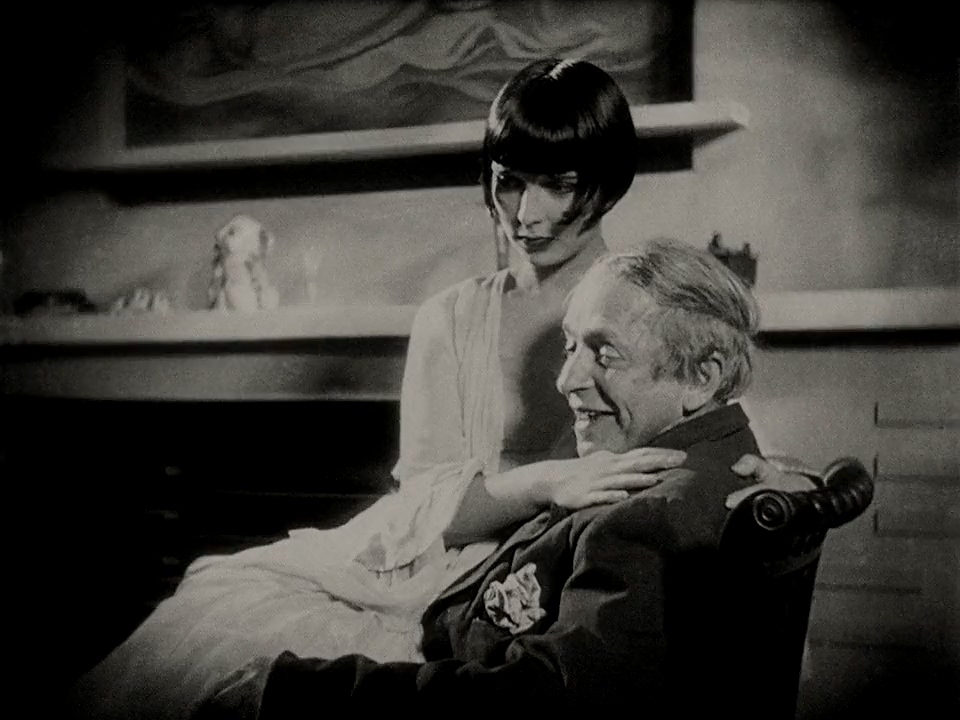 Instead, she unconsciously co-opts the gun as her own phallic weapon and it goes off. The smoke that rises between her and Schön, consigning her not to a grave but a prison, equates to the vapors – the evils of humanity – Pandora released into the world when she opened her “box” in the Greek myth, proof that misogyny existed long before the dozens of artworks Dijkstra surveyed in Idols of Perversity: Fantasies of Feminine Evil in Fin-de-Siècle Culture (1986) were painted and sculpted.
Instead, she unconsciously co-opts the gun as her own phallic weapon and it goes off. The smoke that rises between her and Schön, consigning her not to a grave but a prison, equates to the vapors – the evils of humanity – Pandora released into the world when she opened her “box” in the Greek myth, proof that misogyny existed long before the dozens of artworks Dijkstra surveyed in Idols of Perversity: Fantasies of Feminine Evil in Fin-de-Siècle Culture (1986) were painted and sculpted.
What grounds are there for Pandora’s Box (scripted by Pabst's frequent collaborator Ladislaus Vajda) to warrant accusations of anti-Semitism? Early in the film, Lulu entertains the tramp Schigolch, her original seducer and sometime pimp, in the living room of her swish apartment. Wedekind, who conjectures Schigolch is also Lulu’s father, gave him a name that has aural and sociocultural associations with reptiles and Jewish peddlers; Carl Götz, the popular Jewish actor who played Schigolch, has a verminous quality in the film that contrasts with his look and demeanour in other movies.
As Pabst cuts between Schigolch and Lulu, he shows a Hanukkah menorah on a shelf that’s clearly meant to be noticed. Hutchinson mentions the German Jewish scholar S.S.Prawer’s belief that Pabst included the menorah to acknowledge the Jewish people who worked on the film, while positing that it heralds the Christmas setting of the ending, in keeping with other palindromes in the script. (Pictured below: Fritz Kortner and Brooks)
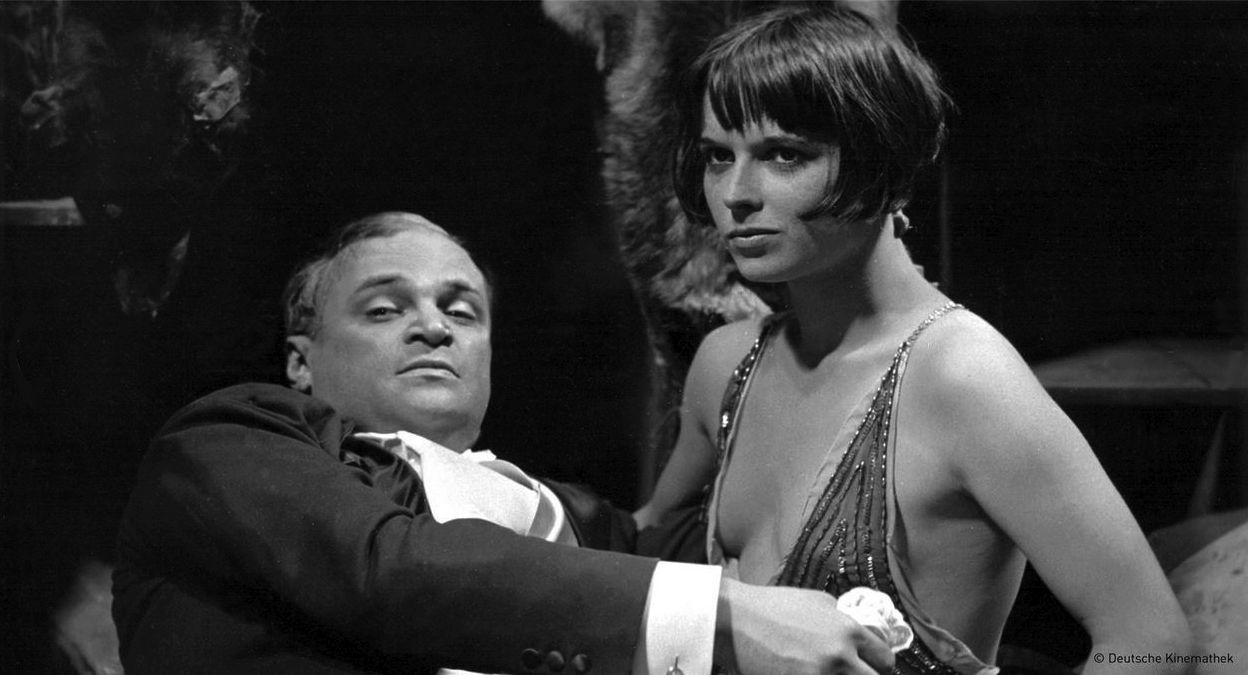 That the menorah is missing it’s ninth and central branch, which holds the candle, or shamash, that lights the others, implies that Lulu is unenlightened. Yet, paradoxically, cinematographer Günther Krampf lit Brooks – her helmet-like flapper’s bob especially - to shimmer and gleam, as if Lulu has an inner light and is more than merely animal. One thing Brooks couldn’t conceal was her intelligence.
That the menorah is missing it’s ninth and central branch, which holds the candle, or shamash, that lights the others, implies that Lulu is unenlightened. Yet, paradoxically, cinematographer Günther Krampf lit Brooks – her helmet-like flapper’s bob especially - to shimmer and gleam, as if Lulu has an inner light and is more than merely animal. One thing Brooks couldn’t conceal was her intelligence.
The menorah could belong to Schön, who finances Lulu’s apartment and has his own key. Complicating matters, Dijkstra, the most vehement critic of the anti-Semitism he sees in Pandora’s Box, takes it as read that Lulu and Schön are Aryans. From the Middle High German schoen,“Schön” – meaning “fine, beautiful, friendly, nice”, words that hardly describe Lulu’s morose lover – is unhelpfully both a German and Jewish surname.
Like Götz, Fritz Körtner, the distinguished actor who played Schön, was Jewish. It’s possible that Lulu keeps the menorah in her apartment to make Schön, who simmers with what Brooks described as “sexual hate” for Lulu (an emotion she attributed to Pabst and believed was the film’s raison d’etre), to make him feel at home when he visits her for sex. Neither Brooks nor Brigitte Helm, the star Pabst originally intended to play Lulu, were Jewish, but Pabst’s mise-en-scène indicates Lulu is. (Pictured below: Alice Roberte, Brooks, and Kortner)
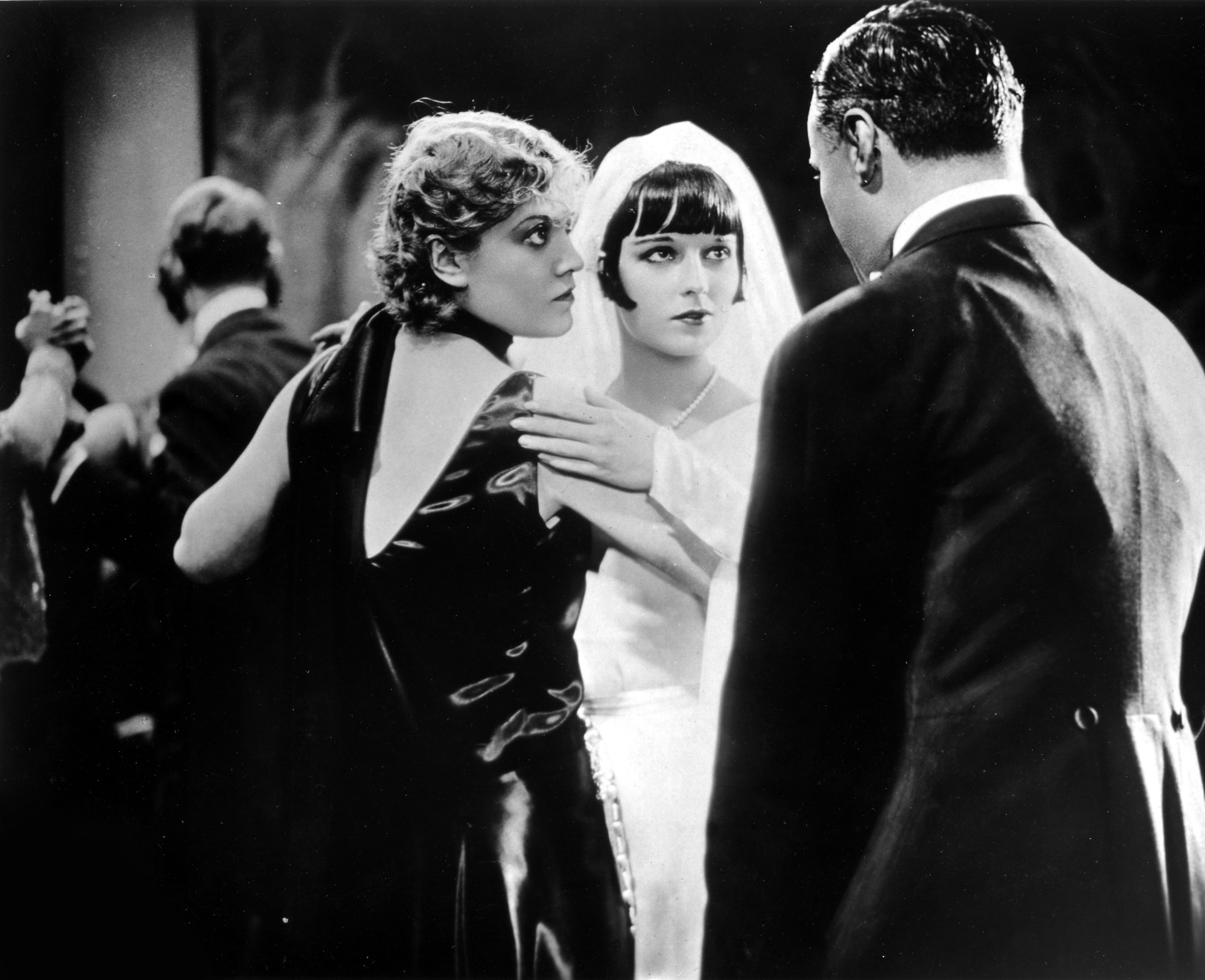 In his meticulously designed images, every object matters, which casts doubt on Prawer's theory. As Schigolch considers Lulu's good fortune, he chances on her purse – a loaded sexual symbol from which he casually snaffles banknotes – beside an ornament of a homunculus-like demon on the shelf behind him. This juxtaposition and the Fagin-like Schigolch’s thieving reveal that Pabst has created this parasitic creature as a Jewish object of revulsion, his survival at the end of the film a calculated warning for the German people.
In his meticulously designed images, every object matters, which casts doubt on Prawer's theory. As Schigolch considers Lulu's good fortune, he chances on her purse – a loaded sexual symbol from which he casually snaffles banknotes – beside an ornament of a homunculus-like demon on the shelf behind him. This juxtaposition and the Fagin-like Schigolch’s thieving reveal that Pabst has created this parasitic creature as a Jewish object of revulsion, his survival at the end of the film a calculated warning for the German people.
Since the camera identifies Schigolch with the demon ornament, it follows that Lulu is identified with the menorah behind her, there being no one else present – the Aryan lower-middle-class meter man whom Lulu delighted with her flirtatious smiles and Schapps having had his daydreams punctured by the effusive welcome she gave the disreputable old man, conceivably a paying client.
Hitler’s Mein Kampf with its obscene anti-Semitic rhetoric was published three years before Pandora’s Box went into production in 1928. Though the reformed Nazi Party made only a three per cent gain in Germany’s federal election that year, anti-Semitism had been on the rise since the end of World War I. Pabst’s placing of a menorah in Pandora’s Box was a red rag to a bull.
None of the German film historians I’ve read suggest that Pabst, an intellectual progressive, was personally anti-Semitic (as Dijkstra does), but observers from Brooks to the film historians Eric Rentschler and David Thomson have questioned his convictions, and it is recognized that he went with the prevailing winds, creatively and politically. The two Nazi propaganda films Pabst made for Josef Goebbels during World War II stained his reputation irrevocably and his post-war attempts to rehabilitate his reputation only damaged it further. (Pictured below: Brooks and Gustav Diessl)
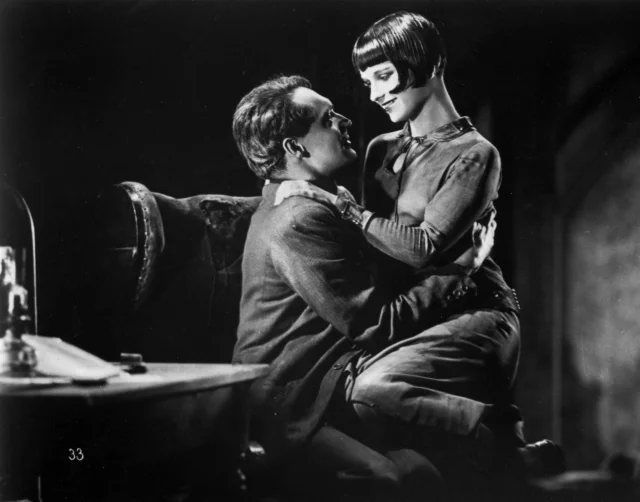 In this earlier article on Pandora’s Box, I commented on the perception that, gazed at and guided by Pabst, Brooks’s performance made her the film’s true auteur. There is no doubt that her capacity – a choice, not an accident – for “being” instead of acting for the camera endowed her scenes (in Pabst’s 1929 Diary of a Lost Girl, too) with a naturalness and modernity that, 94 years later, is unsurpassed.
In this earlier article on Pandora’s Box, I commented on the perception that, gazed at and guided by Pabst, Brooks’s performance made her the film’s true auteur. There is no doubt that her capacity – a choice, not an accident – for “being” instead of acting for the camera endowed her scenes (in Pabst’s 1929 Diary of a Lost Girl, too) with a naturalness and modernity that, 94 years later, is unsurpassed.
If the film’s anti-Semitic strain, hard to deny, means it is, at best, a tainted masterpiece, Brooks’s presence militates against such moral judgements, as Lulu militates against bourgeois sexual hypocrisy, because as a sensualist she cannot help herself. Lulu's designated role as an object of economic exchange proves less tractable.
It’s a Hitlerite “hero” who does for Lulu, says Djkstra, referring to the psychopath she spends her last Christmas with. But he can’t do for Louise Brooks. There she is, onscreen for over two hours, playing and being the pleasure-taking erotic woman incarnate, revelling in her irreducible Lulu-ness.
- More films on theartsdesk

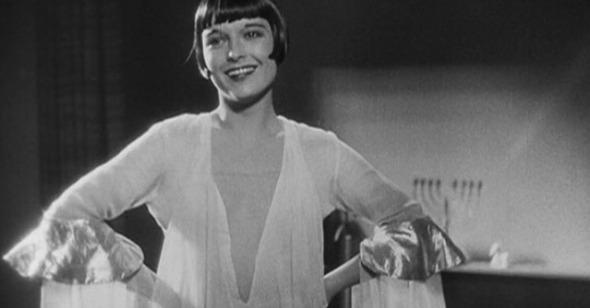













Add comment